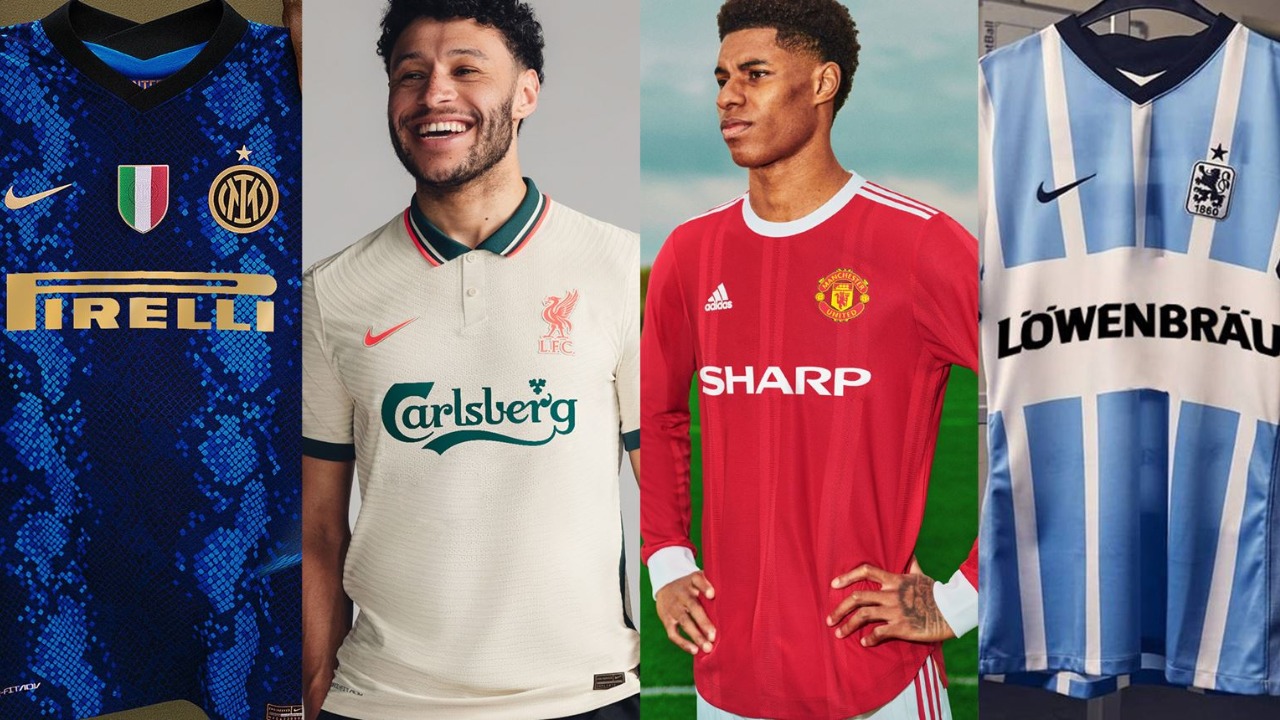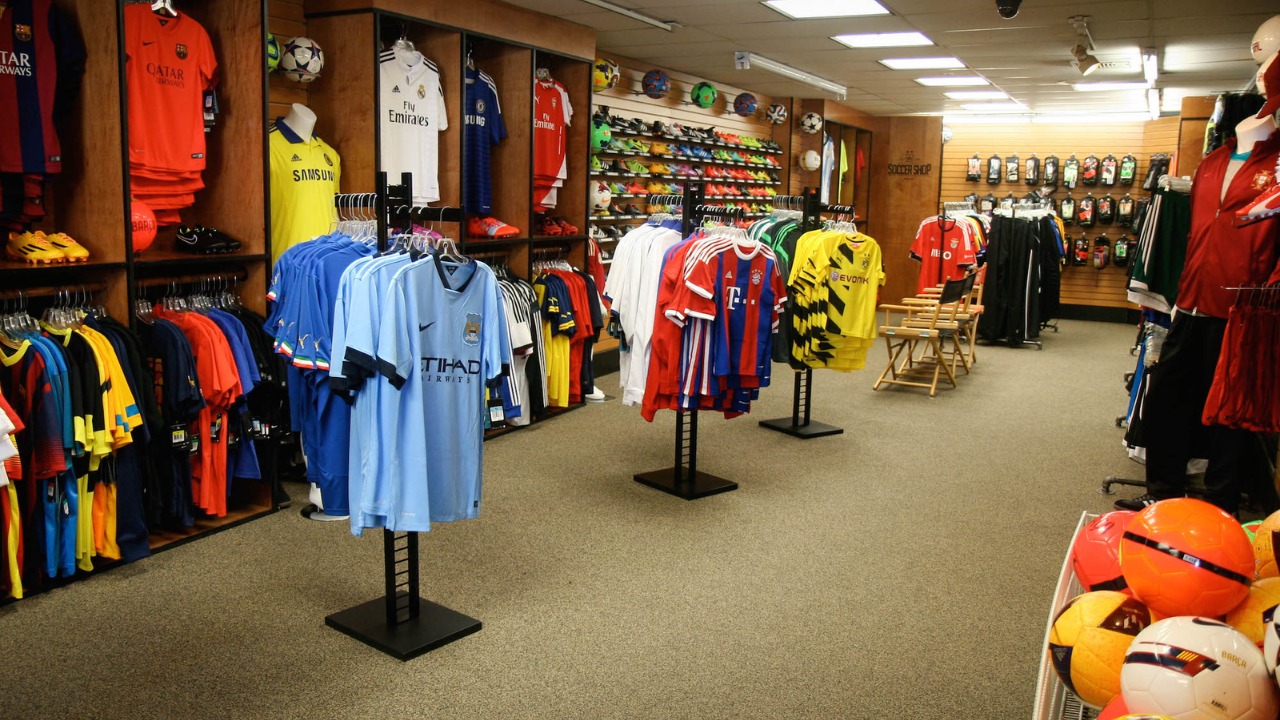
1. Liverpool 1982-83 Home Kit
Design: A basic white pinstripe on a bold red background
Influence: Liverpool dominated English football in the early 1980s, so the iconic style of their 1982–83 uniform is still remembered. With merely a sponsor emblem and pinstripes to accentuate it, its simple yet sturdy design mirrored the club’s commanding presence on the pitch.
Legacy: To add vintage charm to new uniforms, Liverpool and other teams have repeatedly redesigned this jersey by reusing the pinstripe pattern. This kit’s minimalism has established a benchmark for balancing history and style, demonstrating that sometimes less really is more.
2. AC Milan 1988-90 Home Kit
Design: The design has a crisp collar, vertical stripes in red and black, and a simple sponsor logo.
Influence: One of the most memorable vintage football uniforms is AC Milan’s 1988–1990 one, made famous by legends like Ruud Gullit and Marco van Basten. It was memorable because it combined Milan’s traditional colors with a sleek, pointed collar and a simple sponsor placement.
Legacy: This uniform serves as a reminder of Milan’s supremacy in European football and is a mainstay for enthusiasts of vintage football attire. Current AC Milan uniforms still honor this style, demonstrating the design’s enduring appeal. Its exquisite elegance is still used as a template by designers creating kits for prestigious clubs.
3. Argentina 1986 World Cup Kit
Design: straightforward V-neck, light blue and white stripes, and minimal logos
Influence: This uniform is associated with one of football’s most iconic moments: Diego Maradona’s “Hand of God” goal during Argentina’s 1986 World Cup win. Since then, football fans worldwide have associated the simple blue and white stripes with nostalgia.
Legacy: The uniform has come to represent Maradona’s legacy and Argentine football pride. Because it is regarded as the epitome of traditional football gear by fans and designers, it greatly influences football culture. Current iterations maintain the design’s simplicity while always referencing that triumphant moment in 1986.
4. West Germany 1990 Home Kit
Design: The chest is white with a striking, abstract tricolor chevron.
Influence: By adopting an abstract tricolor motif in black, red, and yellow across the breast, Germany’s 1990 World Cup-winning uniform broke away from the simple styles of earlier years. This innovative design was groundbreaking at the time and established a new benchmark for avant-garde jersey designs.
Legacy: The kit’s audacity has impacted the usage of geometric patterns in contemporary kits and spawned innumerable duplicate designs. Germany’s experimental 1990 kit is credited with the artistic progression of numerous clubs’ and nations’ designs, which now include abstract graphic elements.
5. Nigeria 1994 World Cup Kit
Design: Tribal motifs in green and white
Influence: Nigeria’s 1994 uniform, which included green and white hues with tribal designs, caused a stir with its colorful design influenced by Nigerian culture. It became popular immediately and is still regarded as one of the kits that creators and fans adore.
Legacy: By influencing how national teams depict their past through their uniforms, the kit established a trend for sportswear with cultural influences. Nigeria’s 1994-inspired 2018 World Cup uniform went viral worldwide, demonstrating that supporters value designs that honor cultural identity. A trend for bolder, culturally inspired football shirt designs was sparked by this one.
6. Brazil 1970 World Cup Kit
Design: Blue shorts, white socks, and a yellow shirt with green trim
Influence: Frequently regarded as the pinnacle of football history, Brazil’s 1970 uniform embodies a heyday when players like Pelé and Jairzinho helped the country win. The striking blue, green, and yellow mix is easily identifiable and has gained international recognition.
Legacy: With supporters worldwide praising the team’s flair and zeal, this uniform is representative of Brazil’s impact on international football culture. It is a blueprint for Brazil’s national team shirts to this day, and its color palette has become a universal emblem for Brazilian football.
The Cultural Impact of Retro Kits
A cult following has grown around retro kits, frequently incorporating nostalgic features with current fan fashion. They are more than just articles of apparel; they are reminders of special football times and occasions. As a way to honor the sport’s past and establish a connection with the clubs and players who created it, many fans don vintage uniforms.
1. Statements of Fashion
Retro kits are now worn with jeans, trainers and casual clothing, extending the throwback trend into street fashion. As a result, more people are wearing football gear, and vintage uniforms are now a fashion statement outside of stadiums.
2. Boom in Merchandise
Sports teams and marketers have taken advantage of this trend by re-releasing well-liked old uniforms or producing “remixes” with a few contemporary tweaks. Adidas and Nike, for example, regularly bring back their archive designs, presenting kits with a nod to the past that instantly win over fans.
3. Impact on Contemporary Kit Designs
Modern football shirts frequently refer to previous styles as teams try to revive the success and identity connected to specific eras. This explains the modernized pinstripes, chevrons, and traditional collars that characterized retro kits.
Why Retro Kits Continue to Resonate
Football has always been a cultural icon and more than just a game. Vintage uniforms tangibly commemorate football legends’ ascent, legendary triumphs, and illustrious rivalries. These uniforms remind supporters of the wonder, drama, and happiness that football offers millions of people worldwide, regardless of time or place.
Retro football kits will always be available to connect supporters to the sport’s rich past as it develops further, providing a timeless fashion statement and a sentimental retreat. Retro football uniforms are timeless reminders of the beauty of the beautiful game, whether you’re wearing them to cheer on your team or as a nod to your football history.

